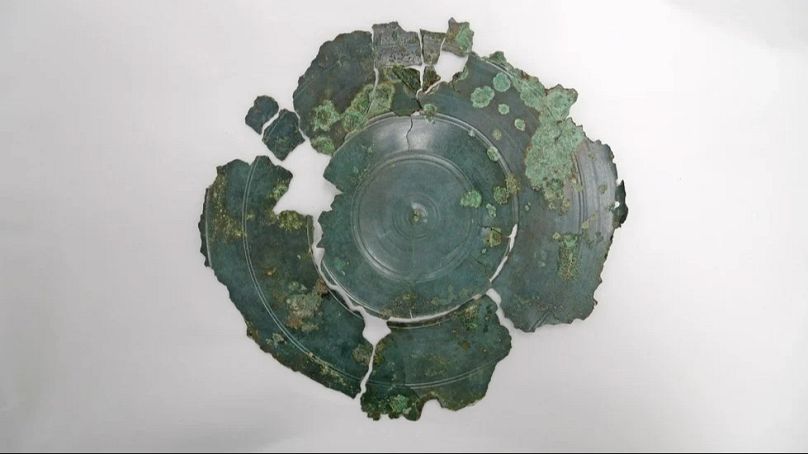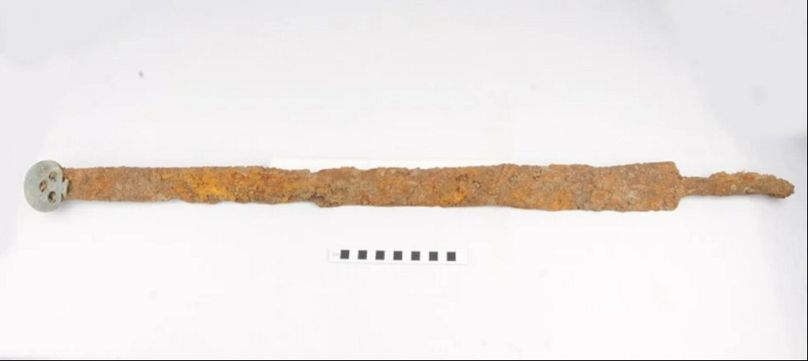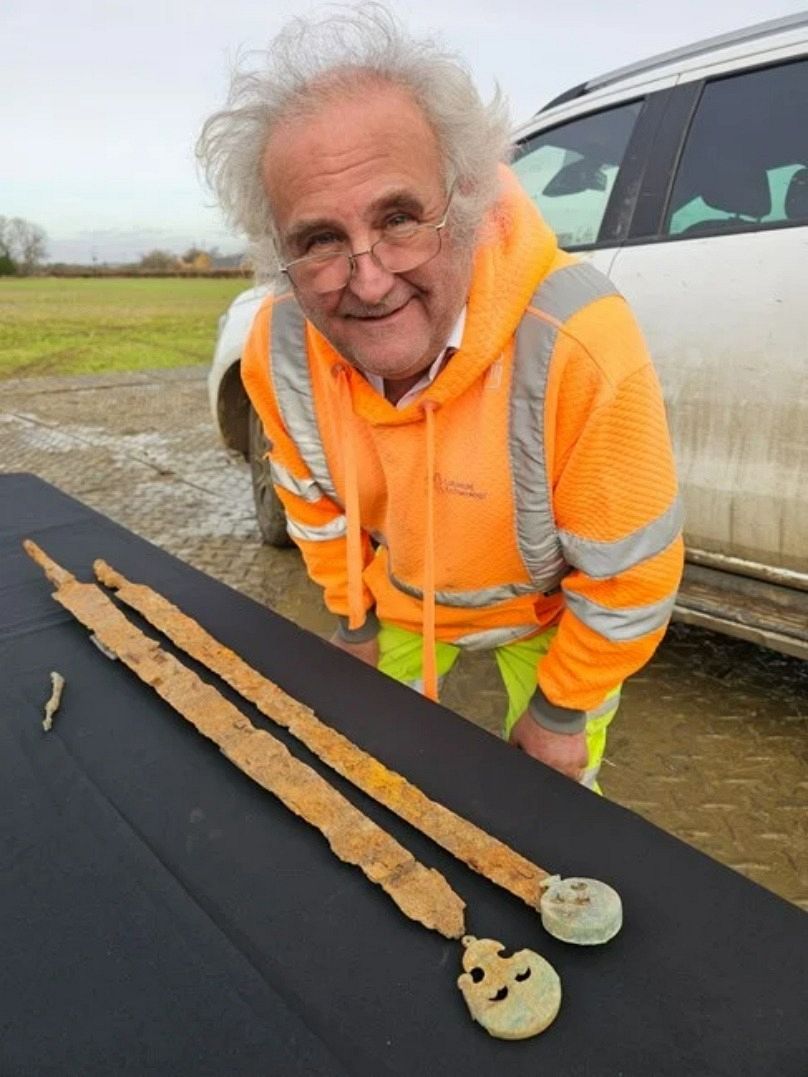Archaeological excavations have revealed an extensive settlement dating from the Early-Middle Iron Age through to the first and second centuries AD during the Roman period.
What began as an extremely rare discovery of two Roman swords by a metal detectorist has led to an enormous Early-Middle Iron Age find in the Cotswolds in south-west England.
Archaeological excavations at the site in Gloucestershire have revealed an extensive Roman era settlement from the first and second centuries.
The site near Willersey, funded by Historic England and directed jointly with Cotswold Archaeology, suggests possible evidence of a Roman villa, which may also have a pair of flanking wings, one at either end of a central range.
Once Historic England has the final report on the archaeological work, it will be able to consider whether to recommend to the UK government that the site be protected as a scheduled monument.
Iron Roman cavalry swords
The dig follows the discovery of two iron Roman cavalry swords, possibly displaying traces of their scabbards, during a metal detecting rally in the north of the Cotswolds in March 2023.
The swords were originally reported to and identified by the Portable Antiquities Scheme, who arranged with the finder, metal detectorist Glenn Manning, and the landowner for them to be donated to the Corinium Museum in Cirencester.
The swords were X-rayed at Historic England’s science facility at Fort Cumberland in Portsmouth.
Analysis of the weapons reveals they were constructed differently: one has evidence of decorative pattern welding running down the centre, whereas the other sword is plain. The pattern-welded sword would have been more expensive to produce and therefore higher status.
The swords will be available for the public to see at the Corinium Museum from 2 August.
Although historically important, at the time of discovery they were not protected by laws such as the 1996 Treasure Act as no gold or silver were discovered within the assemblage that contained the two iron swords, several copper alloy scabbard fittings and strap fittings and a fragmentary copper alloy bowl.
It is believed these long swords or ‘spatha’ were used by the Romans on horseback from early in the second century AD through to the third century AD. They are contemporary with the villa. How they came to be there though, is currently unknown.















